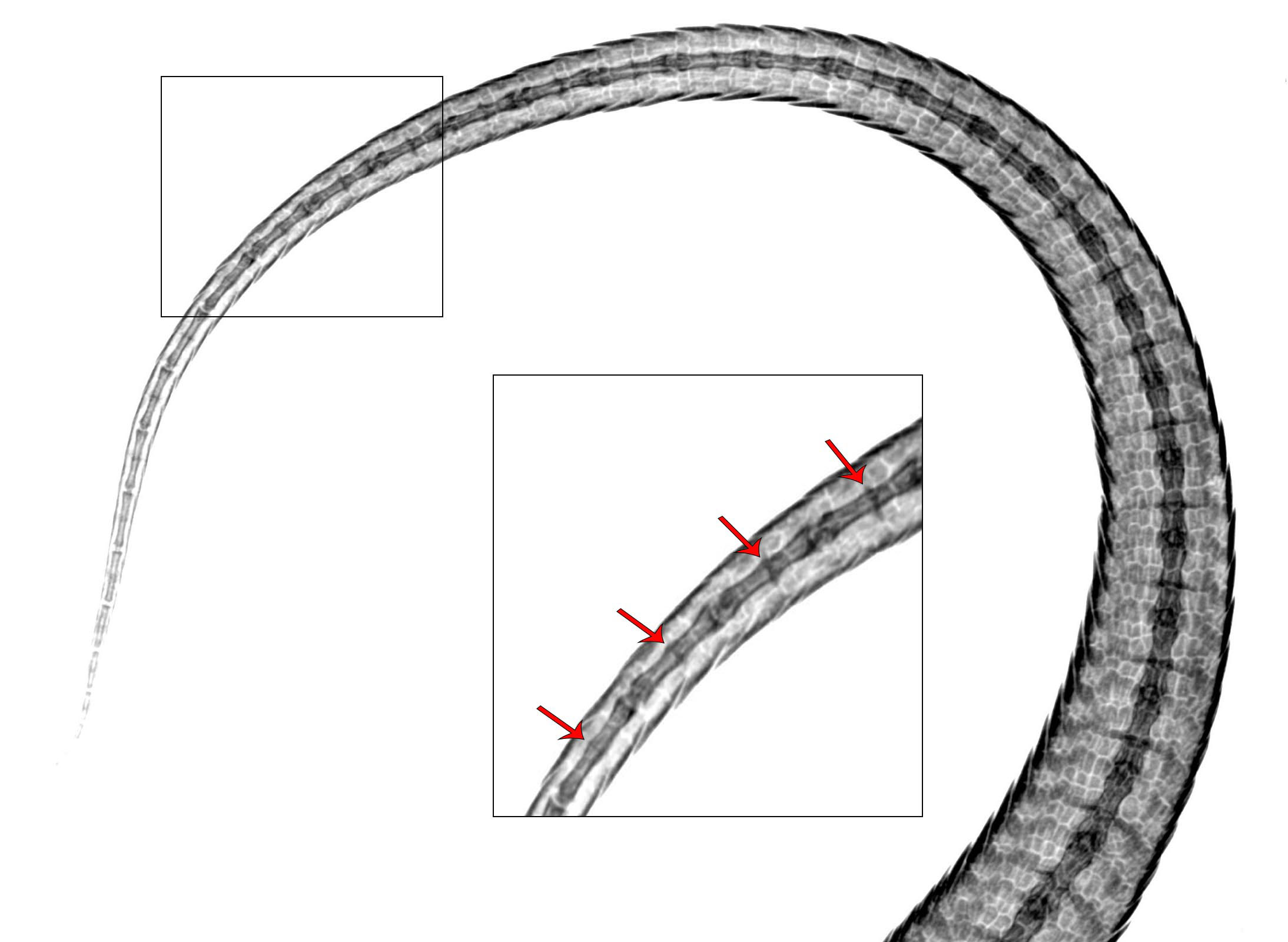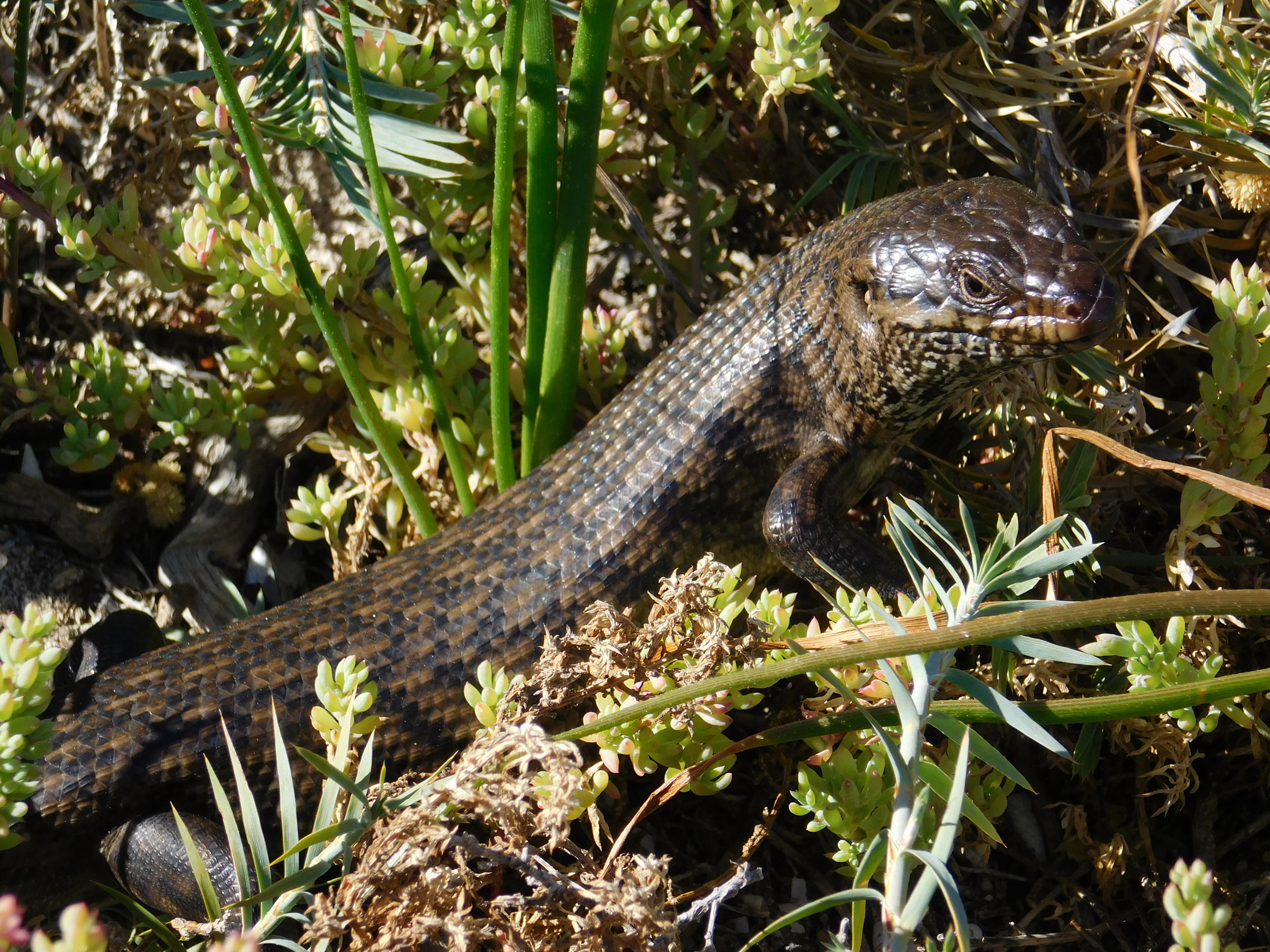James Barr is studying caudal autotomy, the ability of some reptiles to drop and regrow their tail in response to a predator threat.
Illustration by Leigh Douglas
Ethograms is a monthly column published in collaboration with the Australasian Society for the Study of Animal Behaviour (ASSAB), showcasing the work of early-career researchers. Dominique Potvin is a lecturer at the University of the Sunshine Coast, and until recently an outreach officer for ASSAB.
When faced with a threat, animals often behave predictably, with stereotypical responses such as fleeing, fighting or freezing. Humans, too, will often react in a similar way when threatened: English idioms that describe these reactions, like “frozen like a deer in the headlights”, reflect their familiarity. Imagine, however, if you could distract a potential predator or other threat by detaching a limb, knowing it would eventually grow back?
No, we are not in some alternate superhero universe. The ability to detach an appendage at will and regrow it later is called ‘autotomy’, and, while it is currently unavailable for humans as an anti-predator response, it is used by many reptiles, including skinks and geckos. When threatened, lizards in these groups can drop a part of their tail — skeleton and all — to distract a predator with its wriggling and thrashing, while the individual escapes to safety. Over time, the tail grows back. It is an expensive tactic but extremely effective, and certainly intriguing.
James Barr, a PhD candidate at Western Australia’s Curtin University, has been studying caudal (tail) autotomy as part of his research on the King’s skink (Egernia kingii). Specifically, he is investigating how anti-predator strategies change throughout an individual’s lifetime, and how they might evolve under different environmental conditions.
PhD candidate James Barr, pictured here at Penguin Island in Western Australia, is studying tail autotomy in a native Australian lizard. © James Barr
“Anti-predatory mechanisms are paramount to ensure an animal’s survival,” says Barr. “Understanding how this changes temporally, both short term, such as during development, and long term on a more evolutionary perspective, gives us insight into the species’ adaptability to respond to changing pressures.”
“So far it appears that King’s skinks utilise their tails, and their ability to autotomise them, differently depending on their life stage,” he says. “What I am interested in is to what degree this changes during ontogeny, and what factors, if any, appear to be influencing the change”.
At first glance, it would make sense that different anti-predator tactics should be used at different life stages. This, again, is common throughout the animal kingdom. Juveniles often rely on passive approaches, such as concealment or parental defence, when threatened by faster, stronger predators. However, the conditions under which caudal autotomy might be considered the best tactic are not as straightforward. For example, if it is easier for a lizard to regrow its tail during early development, then we might predict this behaviour to be used more by younger individuals. On the other hand, losing and regrowing a tail is quite an expensive response — the new tail has a skeleton made from a cartilage rod rather than vertebrae — and juveniles may lack the experience or resources to do so when they are already expending developmental energy elsewhere.
Through experiments and observations, however, Barr is understanding more and more about the role caudal autotomy plays in different predatory environments for King’s skinks. His work suggests that caudal autotomy may, in fact, be more useful when a skink is young and more vulnerable to attack. While adult skinks can still autotomise, the behaviour seems to be less important at older life stages.



Why is this the case? Is it because older skinks can protect themselves in other ways, or do they simply face fewer threats because of their larger size? To continue exploring these questions in the field, Barr is studying the lizard’s other response options, such as whether escape speed also changes throughout an individual’s lifetime.
“Adult King’s skinks are quite a robust animal, but, despite this, they still remain a very quick and agile lizard for their size,” he says. “There have been reports of adults able to fight and chase away certain snake predators.”
Just like his skinks, however, Barr has faced some environmental challenges of his own. As many a field biologist can attest, the best laid plans of skinks and men oft go astray.
“As a field researcher, dealing with the natural environment can always be a challenge, and no matter how prepared you are, it can always throw your plan askew,” he says. “Sporadic weather conditions over the last season led to a lot more time lost in the field than I had anticipated. One thing that I have found, however, is that you need to be flexible. Having the ability to problem-solve and deal with them when they arise is a necessity as a researcher.”
And so, like the skinks, Barr has changed tactics over the years to keep his project alive. As more data come in, we will learn more about this fascinating anti-predator behaviour, how it develops, and how it has evolved in so many different species. While many in the biomedical field are intrigued about the physiological ability to regrow limbs, the evolutionary context is essential for understanding how genetic selection can act to promote this ability. Through behavioural ecology research, this context is being uncovered, one tail at a time.
Edited by Andrew Katsis
































































